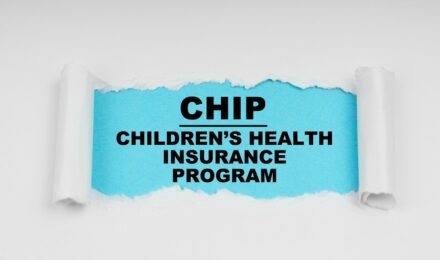Contents
The Supplemental Nutrition Assistance Program (SNAP) remains a lifeline for millions of Americans. Once known as the food stamp program, it has transformed into a sophisticated solution for tackling food insecurity, using electronic benefit transfer (EBT) cards and online purchasing options. Recent legislative updates signal transformative changes to SNAP eligibility, reflecting a renewed commitment to accessibility and equity. How might these shifts impact you?
Key Updates to SNAP Eligibility in 2024
Changes to SNAP eligibility, driven by the Biden administration and the U.S. Department of Agriculture (USDA), focus on able-bodied adults without dependents (ABAWDs) aged 50 to 52. These individuals must now actively seek employment or participate in job training programs.
Previously, work requirements were largely managed at the state level. The new federal mandate ensures uniformity and fairness across all states. These updates modernize eligibility standards while underscoring the program’s adaptability to today’s economic realities. Adjustments to income thresholds, deductions, and benefit allotments further align with inflationary pressures.
Benefits of SNAP
SNAP provides more than just food. It is a cornerstone of health, financial security, and community resilience.
1. Access to Nutritional Food
Healthy food is essential, not optional. Through SNAP, low-income households gain access to vital nutrients that support physical and mental well-being. In 2022, over 21.6 million Americans—around 12.5% of the population—relied on these benefits. Nutritious meals don’t just satisfy hunger; they bolster health, fuel productivity, and nurture childhood development while empowering seniors to live with greater vitality.
2. Financial Empowerment
Every dollar saved on groceries counts. SNAP alleviates financial strain, freeing up resources for other pressing needs. The program’s integration with job training initiatives offers recipients a pathway toward financial independence. Isn’t building self-sufficiency the ultimate goal of any assistance program?
3. Economic Ripple Effects
SNAP is an economic catalyst. It drives spending at grocery stores and retail outlets, creating a ripple effect that supports local businesses and communities. Partnerships with major retailers like Amazon and Walmart have expanded access, allowing recipients to shop online and stretch their purchasing power like never before.
Program Limitations
SNAP’s impact hinges on its clear focus. Restrictions ensure funds are used responsibly, excluding items like alcohol, tobacco, pet food, and non-food essentials. These boundaries help maintain the program’s mission: to combat hunger and ensure proper nutrition.
Still, challenges persist. In high-cost areas, benefit levels may not adequately meet household needs, leaving families to navigate difficult choices. Addressing these gaps remains a pressing task for policymakers.
Long-Term Implications of SNAP
SNAP’s evolution reflects its adaptability to shifting economic and societal needs. With rising inflation and volatile employment landscapes, its importance cannot be overstated.
Supporting Vulnerable Populations
For families with children, SNAP is a lifeline. It reduces food costs, protecting children from the devastating effects of malnutrition. Seniors, often living on fixed incomes, also depend on SNAP to preserve their independence and dignity.
Generational Impact
This program is more than a stopgap; it is an investment in the future. By addressing food insecurity, SNAP fosters healthier communities and provides a safety net during uncertain times. As industries stabilize and households rebuild, SNAP remains a crucial pillar of support for millions striving toward security and stability.
The latest changes to SNAP emphasize its enduring mission to combat hunger and uplift communities. Stay informed, take action, and make the most of this vital program.
Resources
- USDA SNAP Official Website – Detailed information on eligibility, benefits, and updates.
- Feeding America SNAP Outreach – Tools to locate local assistance and streamline the application process.
- Center on Budget and Policy Priorities (CBPP) – Research and analysis on SNAP’s impact and evolving policies.
Contents
The Supplemental Nutrition Assistance Program (SNAP) remains a lifeline for millions of Americans. Once known as the food stamp program, it has transformed into a sophisticated solution for tackling food insecurity, using electronic benefit transfer (EBT) cards and online purchasing options. Recent legislative updates signal transformative changes to SNAP eligibility, reflecting a renewed commitment to accessibility and equity. How might these shifts impact you?
Key Updates to SNAP Eligibility in 2024
Changes to SNAP eligibility, driven by the Biden administration and the U.S. Department of Agriculture (USDA), focus on able-bodied adults without dependents (ABAWDs) aged 50 to 52. These individuals must now actively seek employment or participate in job training programs.
Previously, work requirements were largely managed at the state level. The new federal mandate ensures uniformity and fairness across all states. These updates modernize eligibility standards while underscoring the program’s adaptability to today’s economic realities. Adjustments to income thresholds, deductions, and benefit allotments further align with inflationary pressures.
Benefits of SNAP
SNAP provides more than just food. It is a cornerstone of health, financial security, and community resilience.
1. Access to Nutritional Food
Healthy food is essential, not optional. Through SNAP, low-income households gain access to vital nutrients that support physical and mental well-being. In 2022, over 21.6 million Americans—around 12.5% of the population—relied on these benefits. Nutritious meals don’t just satisfy hunger; they bolster health, fuel productivity, and nurture childhood development while empowering seniors to live with greater vitality.
2. Financial Empowerment
Every dollar saved on groceries counts. SNAP alleviates financial strain, freeing up resources for other pressing needs. The program’s integration with job training initiatives offers recipients a pathway toward financial independence. Isn’t building self-sufficiency the ultimate goal of any assistance program?
3. Economic Ripple Effects
SNAP is an economic catalyst. It drives spending at grocery stores and retail outlets, creating a ripple effect that supports local businesses and communities. Partnerships with major retailers like Amazon and Walmart have expanded access, allowing recipients to shop online and stretch their purchasing power like never before.
Program Limitations
SNAP’s impact hinges on its clear focus. Restrictions ensure funds are used responsibly, excluding items like alcohol, tobacco, pet food, and non-food essentials. These boundaries help maintain the program’s mission: to combat hunger and ensure proper nutrition.
Still, challenges persist. In high-cost areas, benefit levels may not adequately meet household needs, leaving families to navigate difficult choices. Addressing these gaps remains a pressing task for policymakers.
Long-Term Implications of SNAP
SNAP’s evolution reflects its adaptability to shifting economic and societal needs. With rising inflation and volatile employment landscapes, its importance cannot be overstated.
Supporting Vulnerable Populations
For families with children, SNAP is a lifeline. It reduces food costs, protecting children from the devastating effects of malnutrition. Seniors, often living on fixed incomes, also depend on SNAP to preserve their independence and dignity.
Generational Impact
This program is more than a stopgap; it is an investment in the future. By addressing food insecurity, SNAP fosters healthier communities and provides a safety net during uncertain times. As industries stabilize and households rebuild, SNAP remains a crucial pillar of support for millions striving toward security and stability.
The latest changes to SNAP emphasize its enduring mission to combat hunger and uplift communities. Stay informed, take action, and make the most of this vital program.
Resources
- USDA SNAP Official Website – Detailed information on eligibility, benefits, and updates.
- Feeding America SNAP Outreach – Tools to locate local assistance and streamline the application process.
- Center on Budget and Policy Priorities (CBPP) – Research and analysis on SNAP’s impact and evolving policies.






